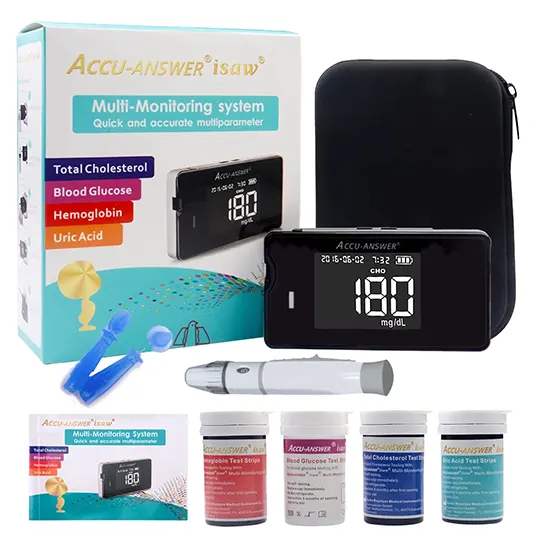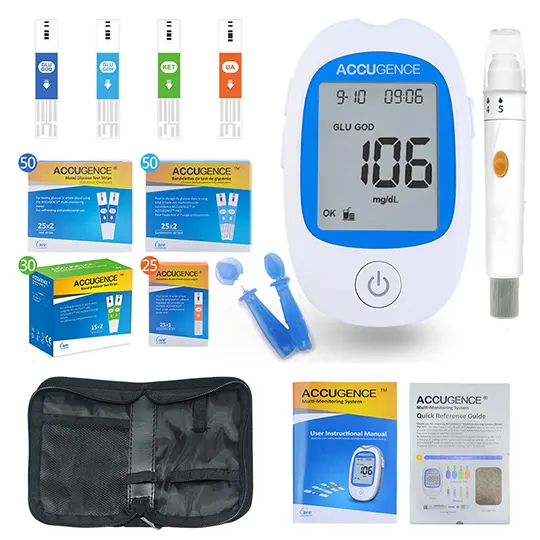Dosing and uses of Mircera (methoxy polyethylene glycol / epoetin beta)
Adult dosage forms and strengths
methoxy polyethylene glycol/epoetin beta
injectable solution
- 30mcg/0.3mL
- 50mcg/0.3mL
- 75mcg/0.3mL
- 100mcg/0.3mL
- 120mcg/0.3mL
- 150mcg/0.3mL
- 200mcg/0.3mL
- 250mcg/0.3mL
- 360mcg/0.3mL
Anemia Associated with Chronic Renal Failure
Do not increase dose more frequently than q4weeks; decreases in dose can occur more frequently; avoid frequent dose adjustments
If hemoglobin rises rapidly (e.g., > 1 g/dL in any 2-week period), reduce dose by 25% or more as needed to reduce rapid responses
For patients who do not respond adequately, if hemoglobin has not increased by >1 g/dL after 4 weeks of therapy, increase dose by 25%
For patients who do not respond adequately over a 12-week escalation period, increasing Mircera dose further is unlikely to improve response and may increase risks; use lowest dose that will maintain a hemoglobin level sufficient to reduce need for RBC transfusions; evaluate other causes of anemia; discontinue Mircera if responsiveness does not improve
Patients with chronic renal failure on dialysis
- Initiate Mircera treatment when hemoglobin level < 10 g/dL
- If hemoglobin level approaches or exceeds 11 g/dL, reduce or interrupt dose of Mircera
- Dose if not currently on ESA therapy: 0.6 mcg/kg IV/SC q2week initially
- Once hemoglobin has been stabilized, dose may be administered once monthly using a dose that is twice that of every-two-week dose and subsequently titrated as necessary
Patients with chronic renal failure not on dialysis
- Consider initiating treatment only when hemoglobin level is < 10 g/dL and the following considerations apply. Rate of hemoglobin decline indicates likelihood of requiring a RBC transfusion and reducing risk of alloimmunization and/or other RBC transfusion-related risks is a goal
- If hemoglobin level >10 g/dL, reduce or interrupt dose, and use lowest dose sufficient to reduce need for RBC transfusions
- Dose if not currently on ESA therapy: 0.6 mcg/kg IV/SC q2week initially
- Once hemoglobin has been stabilized, Mircera may be administered once monthly using a dose that is twice that of the every-two-week dose and subsequently titrated as necessary
Switching Patients Currently on Other ESA
- Receiving epoetin <8000 units/week or darbepoetin <40 mcg/week: 120 mcg/qmonth or 60 mcg/q2week IV/SC
- Receiving epoetin 8000-16000 units/week or darbepoetin 40-80 mcg/week: 200 mcg/qmonth or 100 mcg/q2week IV/SC
- Receiving epoetin >16000 units/week or darbepoetin >80 mcg/week:360 mcg/qmonth or 180 mcg/q2week IV/SC
Dose Adjustment
Dose adjustments should NOT be >qMonth
If Hgb Does Not Reach 11 g/dL Within 12 Weeks
- Use lowest dose to avoid RBC transfusion; do NOT administer higher doses
- Discontinue if response does not improve & patient requires RBC transfusions
If Hgb Increase is >1 g/dL in 2 Weeks
- Reduce by ~25%
- Discontinue if Hgb continues to increase until Hgb decreases
- Restart therapy at approx 25% below previously administered dose
Patients Not Converted from Other ESA:
- Hgb increase <1 g/dL over initial 4 weeks & if adequate Fe reserve: may increase by approx 25%
Administration
IV route is recommended for patients receiving hemodialysis because IV route may be less immunogenic
SC: inject in abdomen, arm or thigh
Pediatric dosage forms and strengths
Safety & efficacy not established
Mircera (methoxy polyethylene glycol / epoetin beta) adverse (side) effects
>10%
Hypertension (13%)
Diarrhea (11%)
Nasopharyngitis (11%)
1-10%
Headache (9%)
Upper respiratory tract infection (9%)
Cough (6%)
Hypotension (5%)
Urinary tract infection (5%)
Procedural arteriovenous fistula thrombosis (5%)
Frequency not defined
Coronary artery disease
Anemia
Septic shock
Serious cardiovascular and thromboembolic events
Seizures
Immunogenicity related PRCA
Increased mortality and/or tumor progression in cancer patients
Increased mortality
Concomitant termination of other CRF therapy
Stevens-Johnson syndrome
Toxic epidermal necrolysis
Warnings
Black box warnings
Patients experienced greater risks for death and serious cardiovascular events when administered erythropoiesis-stimulating agents (ESAs) to target higher versus lower hemoglobin (13.5 vs 11.3 g/dL; 14 vs 10 g/dL) in two clinical studies. Individualize dosing to achieve and maintain hemoglobin levels within the range of 10-12 g/dL.
This drug is not indicated for the treatment of anemia due to cancer chemotherapy. A dose ranging study of MPG-epoetin-beta was terminated early because of significantly more deaths among patients receiving MPG-epoetin beta than it was obsereved in other studies of ESAs in patients with cancer.
ESAs shortened overall survival and/or increased the risk of tumor progression in some clinical studies in patients with breast, head, and neck; lymphoid; non-small cell lung; and cervical cancers. To decrease these risks, as well as the risk of serious cardiovascular and thrombovascular events, use the lowest dose needed to avoid red blood cell transfusions.
Contraindications
Uncontrolled hypertension
Hypersensitivity to any component
Pure red cell aplasia (PRCA) that begins after treatment with Mircera or other erythropoietin protein drugs
Cautions
Increased risk of death and serious cardiovascular events when ESAs used to target Hgb>13 mg/dL
Increased mortality and/or tumor progression in patients with cancer
Not approved for chemotherapy-induced anemia
Caution in history of cardiovascular disease or HTN; control hypertension prior to initiating and during therapy
Risk of HTN, encephalopathy early in treatment
Seizures reported in chronic kidney disease patients participating in clinical studies; increase monitoring of these patients for changes in seizure frequency or premonitory symptoms
Risk of developing treatment-associated antibodies (Abs) if: sudden loss of treatment response; severe anemia & low reticulocyte count
Risk of developing pure red cell aplasia (PRCA) & severe anemia, with or w/out other cytopenias
Evaluate for PRCA if lack/loss of response to Micera develops, in absence of other etiology; if severe anemia and low reticulocyte count develop during treatment, withhold therapy and evaluate for PRCA
Not for use as substitute for RBC transfusions in patients who require immediate correction of anemia
Withhold Micera if anti-erythropoetin antibody-associated anemia suspected
Contact Roche at 1-800-526-6367 to perform assays for antibodies
Discontinue permanently in patients with antibody mediated anemia; DO NOT switch to other ESAs as antibodies may cross react
Patients not on dialysis may require lower doses
Serum ferritin < 100 mcg/L/; transferrin saturation <20%: provide Fe supplementation
Increase dose no more frequently than qmonth
IV route preferred for patients on hemodialysis
Using ESAs to target a hemoglobin level of greater than 11 g/dL increases risk of serious adverse cardiovascular reactions and not shown to provide additional benefits; use caution in patients with coexistent cardiovascular disease and stroke
Control hypertension prior to initiating and during treatment with methoxy polyethylene glycol / epoetin beta
Serious allergic reactions, including anaphylactic reactions, angioedema, bronchospasm, tachycardia, pruritus skin rash, urticaria, and Stevens-Johnson syndrome/toxic epidermal necrolysis reported; if serious allergic or anaphylactic reaction occurs due to therapy, immediately and permanently discontinue treatment and administer appropriate therapy
Pregnancy and lactation
Pregnancy category: C
Lactation: not known if excreted in breast milk, use caution
Pregnancy categories
A: Generally acceptable. Controlled studies in pregnant women show no evidence of fetal risk.
B: May be acceptable. Either animal studies show no risk but human studies not available or animal studies showed minor risks and human studies done and showed no risk.
C: Use with caution if benefits outweigh risks. Animal studies show risk and human studies not available or neither animal nor human studies done.
D: Use in LIFE-THREATENING emergencies when no safer drug available. Positive evidence of human fetal risk.
X: Do not use in pregnancy. Risks involved outweigh potential benefits. Safer alternatives exist.
NA: Information not available.
Pharmacology of Mircera (methoxy polyethylene glycol / epoetin beta)
Half-life, Terminal
IV: 134 +/- 65 hr
SC: 139 +/- 67 hr
Total Clearance
(0.4 mcg/kg IV dose; 0.8 mcg/kg SC dose) 0.49 +/- 0.18 mL/hr/kg
Other Information
Peak Plasma Time: SC: 72 hr
Bioavailability: SC: 62%
Onset: 7-15 d post-initial dose
Mechanism of action
Micera is an erythropoietin receptor activator w/ greater activity as well as increased half-life, in contrast to erythropoietin
Administration
IV Incompatibilities
Do not dilute or administer with other solutions
IV Preparation
DO NOT pool unused portions or use vial or syringe more than once
DO NOT shake vigorously or prolong exposure to light
Do not mix Mircera w/ any parenteral soln
Do not dilute or administer in conjunction with other drug solutions
Inspect visually for particulate matter & coloration prior to administration
Do not use if particulate matter or coloration besides colorless to slight yellowish present
Discard unused portion
IV Administration
Single injection
Storage
Store at 2-8°C (36-46°F); vials NMT 7 d; pre-filled syringes NMT 30 d
Do not freeze or shake
Protect from light



